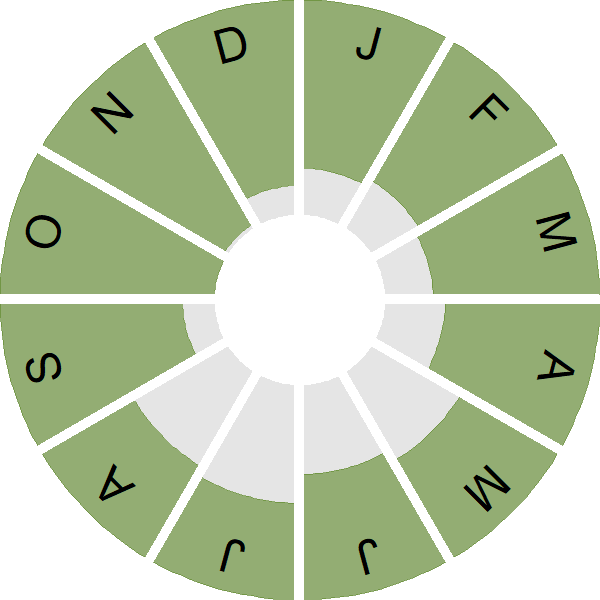Snipe
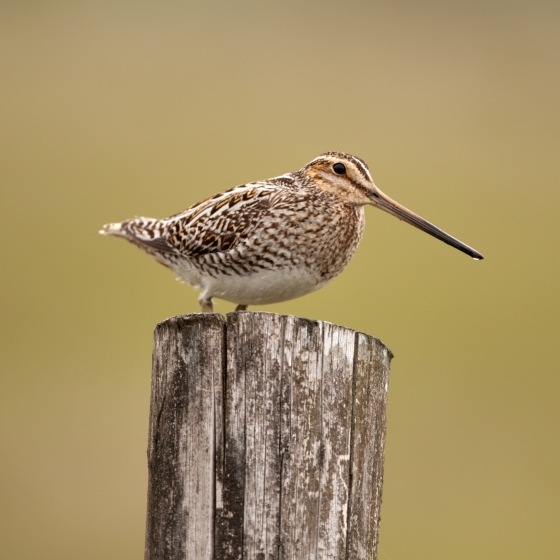
Introduction
A long-billed wader; describing its plumage as 'basically brown' does severe injustice to the exquisite patterning that provides its camouflage.
A 'lover of swamps and quagmire overgrown' (to quote John Clare's poem on the species), the first many know of a Snipe's presence is when it explodes from damp ground surprisingly near one's feet. Their collective term 'wisp' perfectly describes the unpredictable, jinking, flight of a small flock taking off.
Snipe breed throughout Britain, although in smaller numbers in the south and east following the drainage of much of our lowland wet grassland. Numbers are, however, much greater in the winter when we receive birds from as far east as Russia.
- Our Trends Explorer gives you the latest insight into how this species' population is changing.

Key Stats
Identification
ID Videos
This section features BTO training videos headlining this species, or featuring it as a potential confusion species.
Common and Jack Snipe
Songs and Calls
Song:
Call:
Flight call:
Other:
Status and Trends
Conservation Status
Population Change
Snipe were monitored by the CBC mainly in lowland England, where numbers have fallen rapidly since the 1970s as farmland has been drained (Gibbons et al. 1993, Siriwardena et al. 2000a). The CBC index fell from the early 1970s until 1984, when the number of occupied plots became too small for further monitoring (Marchant et al. 1990), and the graph is not included here. Surveys in England and Wales revealed a decrease of 62% in breeding birds in wet meadows between 1982 and 2002, with the remaining birds becoming highly aggregated into a tiny number of suitable sites. The trend in the upland and moorland strongholds of the species is not fully known, but the 1988-91 atlas documented range loss widely in Wales, Northern Ireland and Scotland, as well as lowland England, and atlas work during 2008-11 confirmed that range loss or population decrease has been evident almost everywhere (Balmer et al. 2013). In Northern Ireland, the breeding population had shrunk to just 1,123 (527-1,782) pairs by 2013, representing a decrease of around 78% since 1987, with the distribution becoming increasingly fragmented (Colhoun et al. 2015). The BBS showed initial increases from 1995, especially in Scotland, but a sharp downturn from around 2002 to 2012, since when numbers have been stable or increasing. There has been a decline across Europe since 1980 (PECBMS: PECBMS 2020a>).
Distribution
Snipes are the most widespread wintering waders in Britain & Ireland, occuring in 88% of 10-km squares, spanning a wide range of lowland and upland habitats, except for the highest parts of Scotland. Densities are highest in southwest Ireland, the Northern Isles and in the coastal margins of Britain & Ireland. As a breeder, highest densities are focused in Scotland, northwest England, Wales and in the midlands and west of Ireland.
Occupied 10-km squares in UK
2007/08–10/11
or view it on Bird Atlas Mapstore.
2008–11
or view it on Bird Atlas Mapstore.
European Distribution Map
Distribution Change
Change in occupied 10-km squares in the UK
from 1981–84 to 2007–11
or view it on Bird Atlas Mapstore.
from 1968–72 to 2008–11
or view it on Bird Atlas Mapstore.
Seasonality
Snipes are recorded throughout the year though particularly evident during autumn and winter.
Weekly pattern of occurrence
The graph shows when the species is present in the UK, with taller bars indicating a higher likelihood of encountering the species in appropriate regions and habitats.

Habitats
Breeding season habitats
Relative frequency by habitat
The graph shows the habitats occupied in the breeding season, with the most utilised habitats shown at the top. Bars of similar size indicate the species is equally likely to be recorded in those habitats.
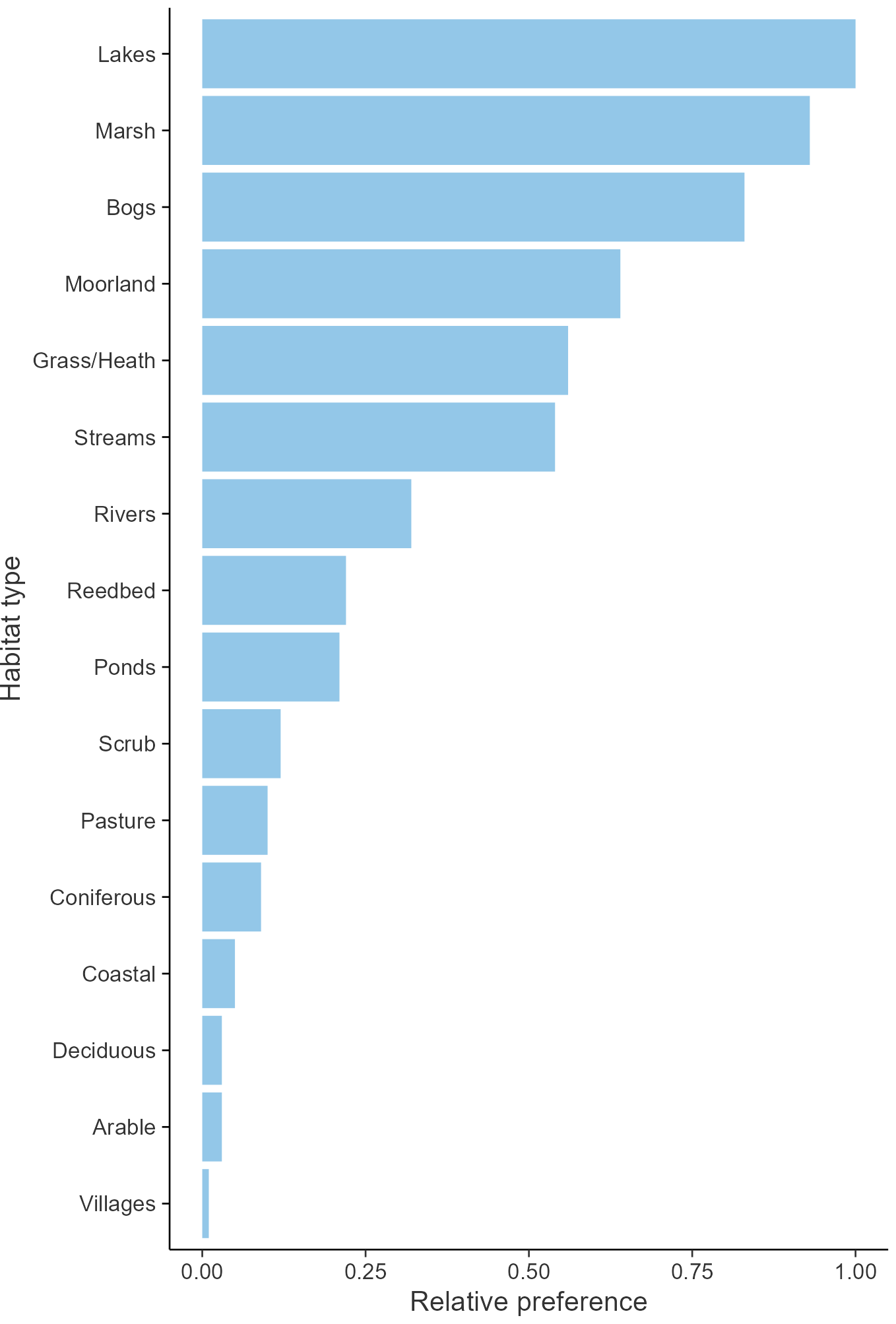
Movement
Britain & Ireland movement
Foreign locations of birds ringed or recovered in Britain & Ireland
Dots show the foreign destinations of birds ringed in Britain & Ireland, and the origins of birds ringed overseas that were subsequently recaptured, resighted or found dead in Britain & Ireland. Dot colours indicate the time of year that the species was present at the location.
- Winter (Nov-Feb)
- Spring (Mar-Apr)
- Summer (May-Jul)
- Autumn (Aug-Oct)

European movements
EuroBirdPortal uses birdwatcher's records, such as those logged in BirdTrack to map the flows of birds as they arrive and depart Europe. See maps for this species here.
The Eurasian-African Migration Atlas shows movements of individual birds ringed or recovered in Europe. See maps for this species here.
Biology
Productivity and Nesting
Nesting timing
Egg measurements
Clutch Size
Survival and Longevity
Survival is shown as the proportion of birds surviving from one year to the next and is derived from bird ringing data. It can also be used to estimate how long birds typically live.
View number ringed each year in the Online Ringing Report.
Lifespan
Survival of adults
Survival of juveniles
Biometrics
Wing length and body weights are from live birds (source).
Wing length
Body weight
Ring Size
Classification, names and codes
Classification and Codes
- Order: Charadriiformes
- Family: Scolopacidae
- Scientific name: Gallinago gallinago
- Authority: Linnaeus, 1758
- BTO 2-letter code: SN
- BTO 5-letter code: SNIPE
- Euring code number: 5190
Alternate species names
- Catalan: becadell comú
- Czech: bekasina otavní
- Danish: Dobbeltbekkasin
- Dutch: Watersnip
- Estonian: tikutaja e. taevasikk
- Finnish: taivaanvuohi
- French: Bécassine des marais
- Gaelic: Naosg
- German: Bekassine
- Hungarian: sárszalonka
- Icelandic: Hrossagaukur
- Irish: Naoscach
- Italian: Beccaccino
- Latvian: merkazina, perkonkaza
- Lithuanian: paprastasis perkuno oželis
- Norwegian: Enkeltbekkasin
- Polish: (bekas) kszyk
- Portuguese: narceja-comum
- Slovak: mociarnica mekotavá
- Slovenian: kožica
- Spanish: Agachadiza común
- Swedish: enkelbeckasin
- Welsh: Gïach Cyffredin
- English folkname(s): Snippick, Gowk
Research
Causes of Change and Solutions
Causes of change
The reasons for the decline are unknown.
Further information on causes of change
During the decline in wet meadows in England and Wales between 1982 and 2002, birds were more likely to persist where soils remained soft and wet (Wilson et al. 2005); however the fact that Snipe have continued to decline, despite soil conditions being improved for them at many lowland wetland reserves, suggests that other key aspects of habitat quality, such as prey abundance, are more likely to be driving the decline (Smart et al. 2008). Buchanan et al. ( 2017) found that a varied vegetation composition was important and that abundance increased with higher vegetation height. In Scotland at least, agri-environment schemes can benefit this species (O'Brien & Wilson 2011).
Increases in Snipe numbers at Langholm Moor between 2008 and 2017 were attributed to predator control (Ludwig et al. 2019). However, this study was at a single site only and further research is needed to investigate whether predation may have contributed to the wider decline of this species. In contrast, nest record scheme data, although based on a low sample size, show that daily failure rates at the egg stage appear to have more than halved since 1967 suggesting predation is not a cause of decline, at least at the nest.
Information about conservation actions
This species is now restricted mainly to key sites such as nature reserves where conservation management for waders is undertaken; however, numbers are still declining even where suitable management occurs (Smart et al. 2008) and therefore further research may be required to confirm the reasons for the decline before lasting solutions can be identified.
In the meantime, managing fields to provide wet and soft soil conditions is likely to enable Snipe to continue to persist at existing sites. This can be achieved through decreased grazing pressure and increasing surface flooding, e.g. by raising water levels (Smart et al. 2008). Opening up rush patches by cutting and grazing, digging scrapes and heightening water levels increased breeding snipe numbers at a site in Cumbria (Holton & Allcorn 2006) although it is unclear which of the actions were most important. Snipe breeding in upland Britain depend on unimproved marginal grassland and wet habitats (Hoodless et al. 2010), and hence it is important that such areas are retained or made available as part of the habitat mosaic.
A long-term conservation strategy will need to provide suitable wet habitat across the wider countryside to enable Snipe to recolonise away from key sites. However, a study in Northern Ireland suggested that intensive pastoral farming and ongoing activities such as drainage and peat extraction was likely to further reduce the suitability of open habitats (Henderson et al. 2002). Conservation policies may therefore be required here and elsewhere in the UK to encourage and enable the protection and provision of Snipe habitat.
Publications (4)
Efficacy of methods for producing population trends of breeding waders from Breeding Bird Survey data
Author: Brighton, C.H., Gillings, S. & Massimino, D.
Published: 2025
This report investigates the efficacy of methods for producing population trends from BTO/JNCC/RSPB Breeding Bird Survey data for six breeding wader species in the UK. It examines the effects of increasing the count threshold on the population trends for these six species, and also explores the effects of different geographic exclusion rules on the population trend of Golden Plover. Overall, it aims to test for any potential biases in the current trends, and in doing so, determines whether we can create a better approach which provides the most robust data for wader conservation moving forwards.
23.06.25
BTO Research Reports
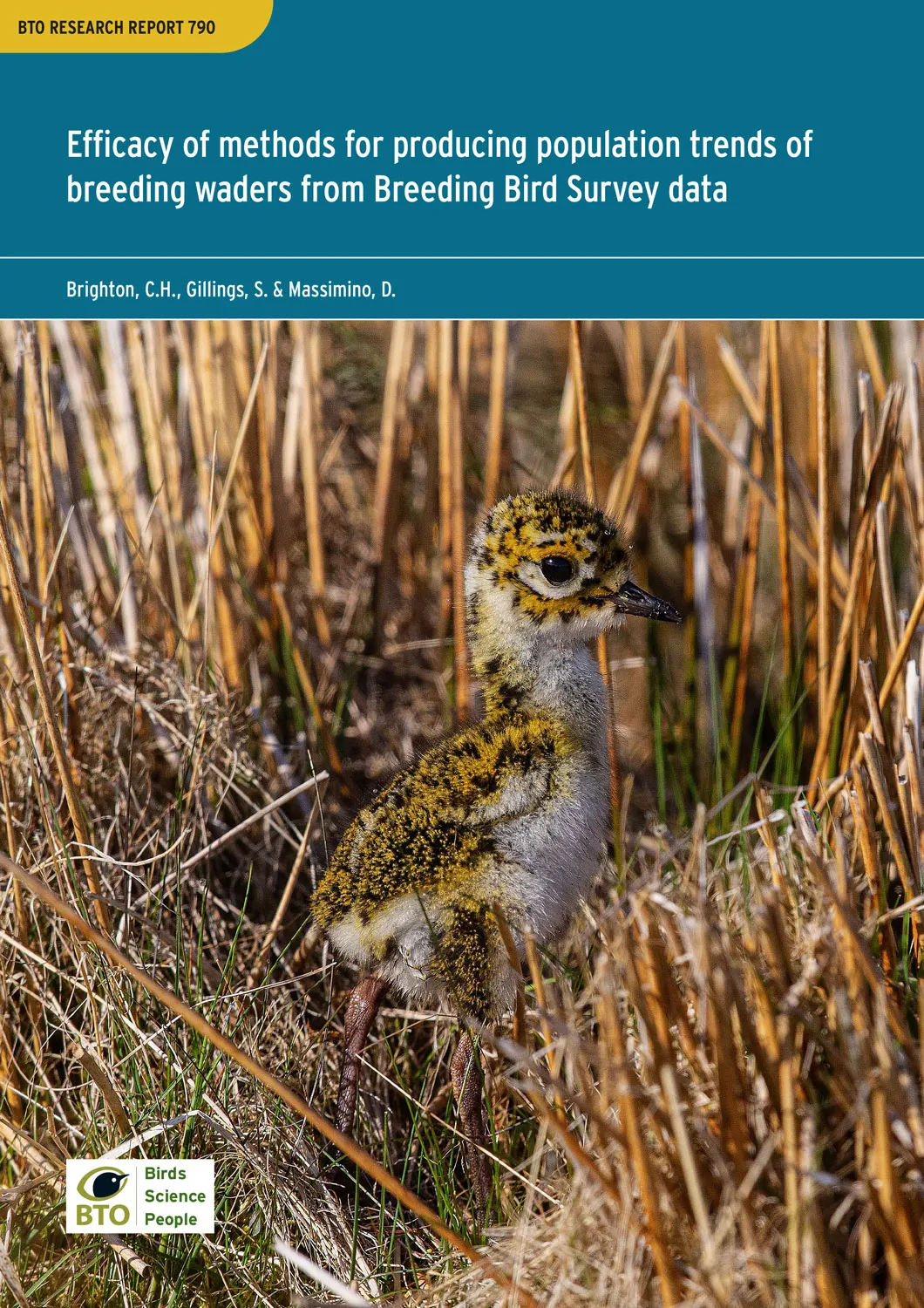
Landscape context influences efficacy of protected areas and agri-environment scheme delivery for breeding waders
Author: Hawkes, R.W., Mason, L.R., Conway, G.J., Siriwardena, G.M., Grice, P.V., Cole, A.J. & Peach, W.J.
Published: 2025
16.04.25
Papers
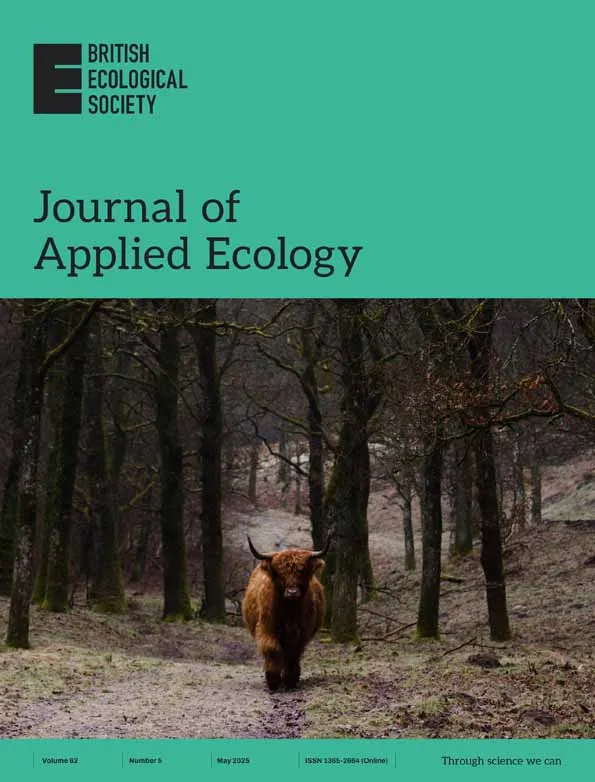
Loss of breeding waders from key lowland grassland sites in Northern Ireland
Author: Booth Jones, K.A., O’Connell, P., Wolsey, S., Carrington-Cotton, A., Noble, D.G., McCulloch, N. & Calladine, J.R.
Published: 2022
Between the mid-1980s and 2018–2019, Northern Ireland’s lowland wet grasslands saw a 73% decline in their breeding wader populations, from 1,296 to 354 pairs across 74 surveyed sites.
18.07.22
Papers
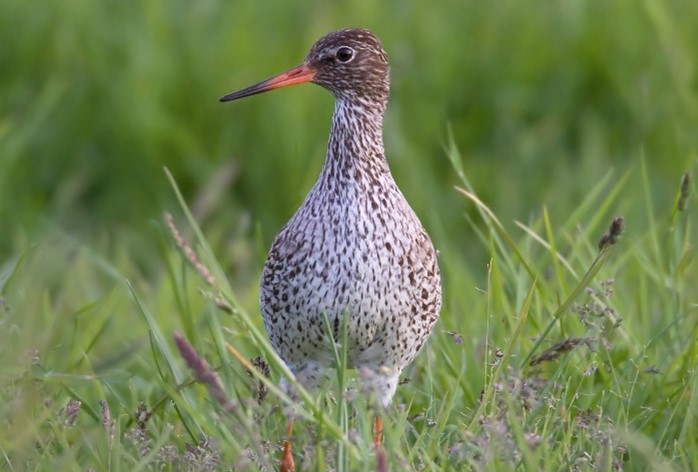
Monitoring Breeding Waders in Wensleydale: trialling surveys carried out by farmers and gamekeepers
Author: Jarrett, D., Calladine, J., Wernham, C., Wilson, M.
Published: 2017
21.11.17
Reports
More Evidence
More evidence from Conservation Evidence.com
Partners
Citing BirdFacts
If you wish to cite particular content in this page (e.g. a specific value) it is best to use the original sources as linked in the page. For a more general citation of the whole page please use: BTO (20XX) BirdFacts Species: profiles of birds occurring in the United Kingdom. BTO, Thetford (www.bto.org/birdfacts, accessed on xx/xx/xxxx).

